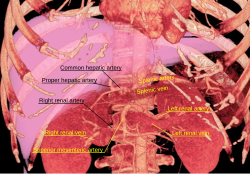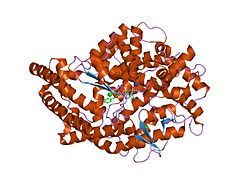| Renovascular hypertension | |
|---|---|
| Other names | Renal hypertension |
 | |
| 3D rendered CT of abdominal aortic branches kidneys | |
| Specialty | Cardiology, nephrology |
| Symptoms | High BP, kidney dysfunction [1] |
| Risk factors | Diabetes, High cholesterol [1] |
| Diagnostic method | Blood and urine test [2] |
| Treatment | Antihypertensive, Stress reduction [1] |
Renovascular hypertension is a condition in which high blood pressure is caused by the kidneys' hormonal response to narrowing of the arteries supplying the kidneys. [1] When functioning properly this hormonal axis regulates blood pressure. Due to low local blood flow, the kidneys mistakenly increase blood pressure of the entire circulatory system. It is a form of secondary hypertension - a form of hypertension whose cause is identifiable. [3] [4]

